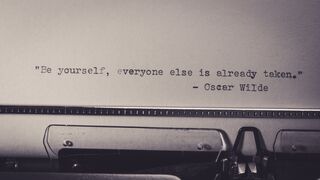Career
Whistleblowers: Speaking Up for Justice
Part 1: 13 things you need to know.
Posted August 5, 2020

You do not choose to be a whistleblower. It is a collision of consciousness and circumstance, unknowingly entering into a relationship or careening with a culture where wrongs are hidden in the corner cabinets with no intention of cleaning up the mess.
Ethical dilemmas, controversy, and often job loss envelop the timelines of those positioned in a seat to speak out against the unraveling of the moral code. Whether it be Mark Felt helping to expose the Watergate scandal, Sherron Watkins reporting improper accounting practices at Enron, or Edward Snowden revealing the far reach of global surveillance programs, whistleblowers place themselves in the path of an oncoming train in an effort to force a reckoning. Though each whistleblower has a storyline unique to his experience, I have yet to interview one who entered the workplace in search of trouble and who didn’t suffer mightily for speaking out.
Below are 13 things, divided into two parts, research tells us about these bold truth-tellers fighting for the protection and justice for all.

1. Definition of Terms. Though academics often squabble over the definition of complex terms, researchers of whistleblowing overwhelmingly agree on the definition first put forth by Near and Miceli (1985), whistleblowing is “the disclosure by organization members (former or current) of illegal, immoral, or illegitimate practices under the control of their employers, to persons or organizations that may be able to effect action.”
2. Characteristics of Whistleblowers. Research by Mesmer-Magnus and Viswesvaran (2005) found whistleblowers to be morally sensitive, possess a strong ethical identity, and exemplify moral courage, defined as the tenacity to act when faced with ethical violations and injustices. Whistleblowers tend to be highly educated and often hold positions in upper management. Age and tenure in an organization have not shown to be predictive factors for speaking out.
Holtbrügge, Baron, and Friedmann (2015) were disappointed to discover that many employees take a pragmatic ethical stance while at work, following the culture of the organization even when that means being complicit or contributory in the presence of questionable behavior. In contrast, whistleblowers possess a strong moral compass that will not be swayed by external pressures to comply with wrongdoing. Most whistleblowers contend exposing injustices is not a choice but an obligation, especially after witnessing colleagues’ indifference and complacency.

3. Bad Followers. As Solas (2019) asserts, “Bad leaders would not be able to realize their ambitions without the support of dedicated, opportunistic, docile, or indifferent followers. Their success is assured by the complicity of the silent majority. Going along with villainy certainly resolves the dilemma of self-sacrifice.”
“Bad followers,” according to Solas, fall into one of four categories. The first group obeys orders in an effort to appease management, profit from silence, or because it is easier to acquiesce to authority than to take a moral stance. The second group, referred to by Kellerman (2004, 2008) as “evildoers,” needs little enticement to engage in unethical behavior. It is as if they are energized by drama and mean-spirited deeds. The third group, follow the leader out of a lack of resolve, insufficient confidence, or fear of bullying and retaliation. The last group of followers, sometimes called “isolates,” keep to themselves, exhibiting characteristics of indifference.
Solas (2019) contends that in order to combat “bad followers,” organizations must focus on consciousness-raising which can be accomplished by hiring individuals not afraid to stand up to the immoral majority and resist corrupt cultural norms. Evoking consciousness requires workplaces to tell a new story about what it means to serve, succeed, follow, and lead.

4. Holes in Protective Legislation. Many of the laws offering protection to whistleblowers are specific to government, such as The Whistleblower Enhancement Act of 2012 which supports government workers who report fraud, waste, and abuse, or the False Claims Act, also known as Lincoln Law, which protects government programs from fraud by imposing liability on individuals and companies filing false claims. Others, as pointed out by Boyne (2014), are “narrowly tailored, industry-specific legislative acts” leaving many whistleblowers out in the cold.
The National Whistleblower Center and the Government Accountability Project are two organizations that offer an abundance of resources. Whistleblowers are well-advised to seek counsel from employment lawyers who are well versed in federal and state protective whistleblowing legislation and have amassed a successful record of protecting whistleblowers brave enough to speak out.
5. Civil Disobedience. Civil disobedience begins in the seat of the soul, when the whistleblower senses something is askew, and then it is birthed into the world, as he stands up and asserts, “I will not participate in these injustices and will articulate publicly the wrongs committed in this place, against the people we have been charged to protect.”
Thoreau, in his classic essay Civil Disobedience, problematizes the act of blindly following the rules, stating, “Law never made men a whit more just; and, by means of their respect for it, even the well-disposed are daily made the agents of injustice.” He goes on to encourage the populous to, “Let your life be a counter-friction to stop the machine. What I have to do is to see, at any rate, that I do not lend myself to the wrong which I condemn.” In this sense, Thoreau understood how easy it is for individuals to adopt the unspoken rules and culture of a toxic organization, stating, “The rich man ... is always sold to the institution which makes him rich … the more money, the less virtue.”

Brownlee (2012) builds on Thoreau’s work citing two conditions necessary for civil disobedience. First, the action must be intentional, and second, it must be carried out for the purpose of outwardly communicating dissent with the hope of revising the wrongs and impacting lasting change.
Civil disobedience, by definition, shakes the hierarchy and shines a flashlight into the corners of stalemate behaviors that employees have been conditioned to ignore. Case studies exemplify this “looking the other way” like the school administrator who buries the file folder full of parents’ complaints detailing an abusive teacher’s actions or the owner of the corner boutique whose accounts receivable never quite matches up with what was actually received.
Kennedy and Schweitzer (2018) found that though whistleblowers often suffer significant retaliation in the short term, in the elongated timeline of history, they elicit high levels of public trust due to their willingness to fight for justice at great personal cost, often including job loss. In other words, civil disobedience brings short-term personal hardship but may provide long-lasting hope and change within the broader community.
6. Moral Change Agents and the Philosophy of Information. The ethical juncture innocently stumbled upon by whistleblowers is likely to have been built and bent over years or decades. Such crossroads exemplify a crisis of IE or informational ethics. The term IE was originally situated in the research canon of librarianship and dealt with the moral implications of how information is created, correlated, and disseminated to or hidden from choice individuals for a specific purpose.
Oxford Professor, Luciano Floridi (2010, 2016), expounded on the term, proposing IE warrants its own branch of philosophy, as opposed to serving as an add on to other disciplines such as computer science or knowledge management. The theory of whistleblowing, in this sense, is actually a theory of information. It examines who creates information, if the information is accurate, and how the information is to be used, abused, disguised, or disposed of.
When whistleblowers speak up, they are catapulting private, potentially harmful information into the public sphere for necessary examination and cleaning. For example, a stockbroker may share conversations from a private meeting, in which employees were encouraged to oversell a volatile fund to the elderly, a population that benefits from conservative investments. In this example, the whistleblower hopes to cease the practice by exposing an indefensible act. This exposure of information usually occurs only after the whistleblower made repeated attempts to rectify the ethical dilemma through internal channeling.

Please click here for Part II and find out how whistleblowing is an act of courage, an ongoing process not a singular act, the typical unfolding of the whistleblower’s experience, their pro-social identification with victims, the types of environments that prompt whistleblowers to act, the prevalence of retaliation for speaking out, and survival strategies for “committing the truth” (Devine and Maassarani, 2011).
Copyright (2020). Dorothy Courtney Suskind, Ph.D.
References
Alford C. F. (2001). Whistleblowers: Broken Lives and Organizational Power. Ithaca, NY: Cornell University Press.
Boot, E. R. (2019). The ethics of whistleblowing. London: Routledge.
Boyne, S. M. (2014). Whistleblowing. The American Journal of Comparative Law, 62, 425–455.
Brown, A. J. (2008). Whistleblowing in the Australian public sector: enhancing the theory and practice of internal witness management in public sector organizations.
Brownlee, K. (2012). Conscience and Conviction: The Case for Civil Disobedience. Oxford: Oxford University Press.
Devine, T., Maassarani, T. F., & Government Accountability Project. (2011). The corporate whistleblower's survival guide: a handbook for committing the truth(Ser. Bk currents book). Berrett-Koehler.
Floridi, L. (2010). The philosophy of information: ten years later. Metaphilosophy, 41(3), 402–419.
Floridi, L. (2016). Faultless responsibility: on the nature and allocation of moral responsibility for distributed moral actions. Philosophical Transactions: Mathematical, Physical and Engineering Sciences, 374(2083), 1–13.
Holtbrügge, D., Baron, A., and Friedmann, C. (2015). “Personal attributes, organizational conditions, and ethical attitudes: A social cognitive approach,” Business Ethics: A European Review 24: 264–281.
Kellerman, B. (2004). Bad Leadership: What It is, How It Happens, Why It Matters. Boston, MA: Harvard University Press.
Kellerman, B. (2008). Followership: How followers are creating change and changing leaders. Boston, MA: Harvard Business Press.
Kennedy, J. A., & Schweitzer, M. E. (2018). Building trust by tearing others down: when accusing others of unethical behavior engenders trust. Organizational Behavior and Human Decision Processes, 149, 111–128.
Kenny, K. (2019). Whistleblowing: Toward a new theory. Cambridge: Harvard University Press.
Kenny, K., Vandekerckhove, W., & Fotaki, M. (2019). The whistleblowing guide: Speak-up arrangements, challenges, and best practices. Hoboken, NJ: John Wiley & Sons.
Lennane, J. (1996). What happens to whistleblowers, and why? Social Medicine, 6(4), 249-258.
Mannion, R., Blenkinsopp, J., Powell, M., McHale, J., Millar, R., Snowden, N., & Davies, H. (2018). Understanding the knowledge gaps in whistleblowing and speaking up in health care: narrative reviews of the research literature and formal inquiries, a legal analysis and stakeholder interviews. Health Services and Delivery Research, 6(30), 1–190.
Mesmer-Magnus, J. R., & Viswesvaran, C. (2005). Whistleblowing in organizations: an examination of correlates of whistleblowing intentions, actions, and retaliation. Journal of Business Ethics, 62(3), 277–297.
Near, J. P., & Miceli, M. P. (1986). Retaliation against whistleblowers: Predictors and effects. Journal of Applied Psychology, 71(1), 137–145.
Near, J. P., & Miceli, M. P. (1985). Organizational dissidence: The case of whistle-blowing. Journal of Business Ethics, 4(1), 1–16.
Özdemir, M. (2013). The relationship of organizational corruption with organizational dissent and whistleblowing in Turkish schools. Cukurova University Faculty of Education Journal, 42(1).
Perron, A., Rudge, T., & Gagnon, M. (2020). Hypervisible nurses: effects of circulating ignorance and knowledge on acts of whistleblowing in health. Ans. Advances in Nursing Science, 43(2), 114–131.
Rehg, M. T., Miceli, M. P., Near, J. P., & Van Scotter, J. R. (2008). Antecedents and outcomes of retaliation against whistleblowers: gender differences and power relationships. Organization Science, 19(2), 221–240.
Schilpzand, P., Hekman, D. R., & Mitchell, T. R. (2015). An inductively generated typology and process model of workplace courage. Organization Science, 26(1), 52–77.
Solas, J. (2019). Conscientious objections to corporate wrongdoing. Business and Society Review, 124(1), 43–62.
Thoreau, H. D. (2015). Civil disobedience. New York: Open Road Integrated Media.
Vandekerckhove, W. (2018). Whistleblowing and information ethics: facilitation, entropy, and ecopoiesis. Journal of Business Ethics, 152(1), 15–25.
Weitzel, P., and Rodgers, Z. 2015. “Broad shareholder value and the inevitable role of conscience,” New York University Journal of Law and Business 35: 35–96.




